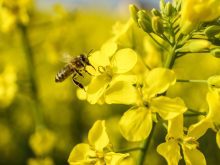A survey of vaccination practices in the United States suggests that more than 70 percent of producers incorrectly vaccinate their cattle. Producers are not getting the benefit they desire because optimum immunity is not achieved.
The first step is to follow the manufacturers’ label recommendations. Vaccines must be injected in the correct location and given at the correct time. A vaccine injected in the skin, or intradermal, rather than under it, or subcutaneous, may not work. Intramuscular vaccines must be given in the muscle, not under the skin.
Read Also

Kochia has become a significant problem for Prairie farmers
As you travel through southern Saskatchewan and Alberta, particularly in areas challenged by dry growing conditions, the magnitude of the kochia problem is easy to see.
Timing is critical. Missing a booster to a primary vaccination or giving it at the wrong time is the most common cause of vaccine failure. Most boosters are needed three to four weeks after the first vaccine. Immune responses will not be optimal if boosters are given within two weeks or after eight weeks of the primary vaccination.
Vaccines also fail when administered under conditions that thwart an effective immune response, such as administering vaccines to calves as soon as they enter a feedlot.
Before arrival, calves are exposed to animals from different sources, all potentially carrying disease organisms. Stress from transportation, socialization, adaptation to a new environment, and dietary changes takes its toll.
Producers who vaccinate on arrival expect these newly arrived calves to mount an immune response while they are stressed or fighting infections.
The vaccinations may help prevent infectious disease late in the feeding period, but will not be effective during the first few weeks after processing, when it is most critical.
For the best response, calves should be vaccinated when stress is minimal and at least two weeks before the anticipated exposure to infectious agents.
Maternal immunity can also minimize a calf’s vaccine response. Antibodies absorbed from colos-trum inactivate the vaccine, negating the need for the calf’s immune system to mount a response. Maternal antibody levels do fall with time, but most calves aren’t able to produce antibodies effectively until they are older than two months.
Modified-live vaccines are more likely to break through maternal antibodies and stimulate an active immune response at an earlier age than killed vaccines.
As well, vaccines administered through the nose seem to create a response earlier in life than those injected in the muscle.
Once an animal has mounted a protective immune response, annual boosters with a killed vaccine seem to provide a more consistent and higher antibody response than annual modified live vaccines.
A vaccine program should be an integral part of every bovine management system. The choice of vaccines depends on which infectious agents are common on the premises and which organisms pose a real economic threat.
Some infectious diseases have a limited geographic range or are sporadic. Even though vaccines are available, they should only be used under specific conditions.
A few infections are of minor economic importance, or the vaccines provide questionable protection. In these cases, proper husbandry rather than vaccination is recommended.
Every program must be tailored to the herd – the type (cow-calf or feedlot), facilities, location, and husbandry practices.
















